In Japan—a nation defined by its islands—the wave is not just a natural force but a cultural heartbeat. For centuries, artists have captured its dual nature: calm and chaos, creation and destruction. Waves embody the Japanese worldview of mujō (impermanence)—the truth that all things are transient, yet endlessly reborn.
From embroidered kimonos and lacquered boxes to woodblock prints and golden screens, the wave motif symbolizes resilience, balance, and the eternal dance between humankind and nature. Each crest and trough tells a story—not merely of water, but of time itself.
1. Seigaiha – The Calm Beneath the Surface
The formalized pattern (wagara 和柄, わがら) known as seigaiha (青海波, “blue ocean waves”) dates back to the 6th century, its rhythmic arches representing the sea’s endless peace. Appearing first on maps and court garments, it later adorned pottery, textiles, and Noh costumes.
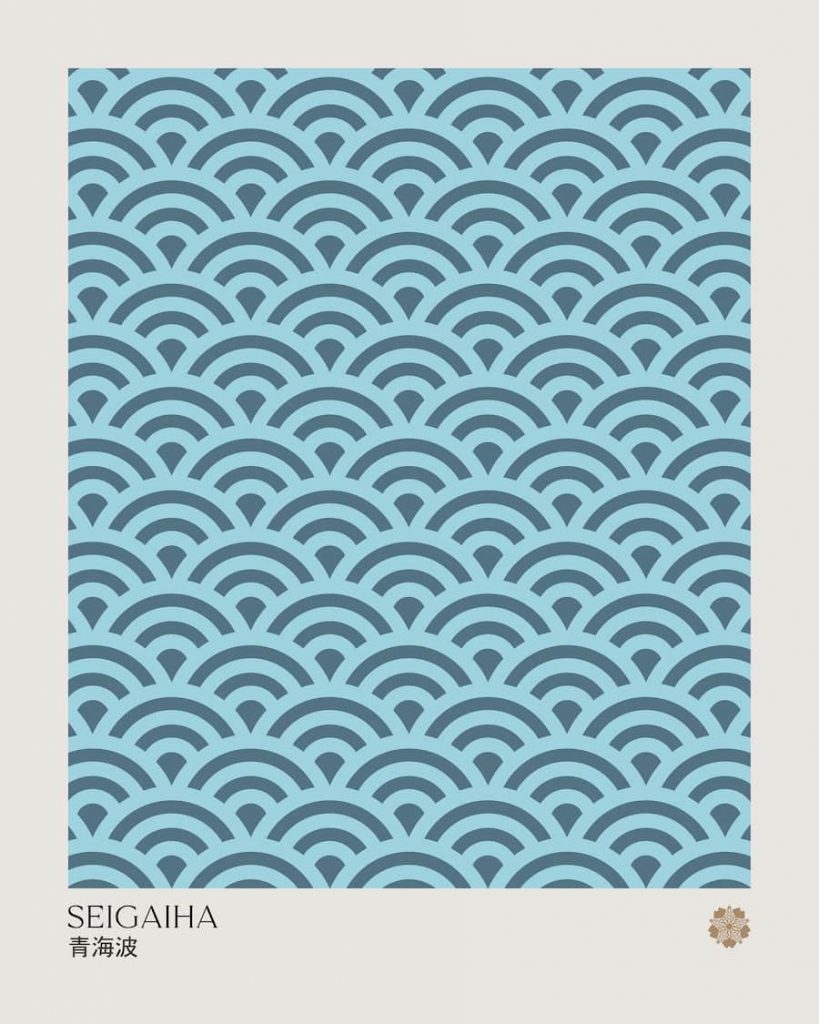
Unlike turbulent waves, seigaiha offers serenity and repetition—a visual prayer for harmony and prosperity. Variants like kiku-seigaiha, combining chrysanthemum petals and waves, symbolize longevity and renewal, echoing Buddhist cycles of rebirth.
Each curve of seigaiha whispers continuity—generations rising and falling like gentle tides.
Read more about traditional Japanese patterns called wagara.
2. Rinpa Waves – Golden Seas and Divine Motion
In the early 17th century, Tawaraya Sōtatsu reimagined waves in gold. His folding screens (byōbu), Waves at Matsushima, shimmer with tarashikomi brushwork—pigment layered while still wet to create the look of water in perpetual motion.
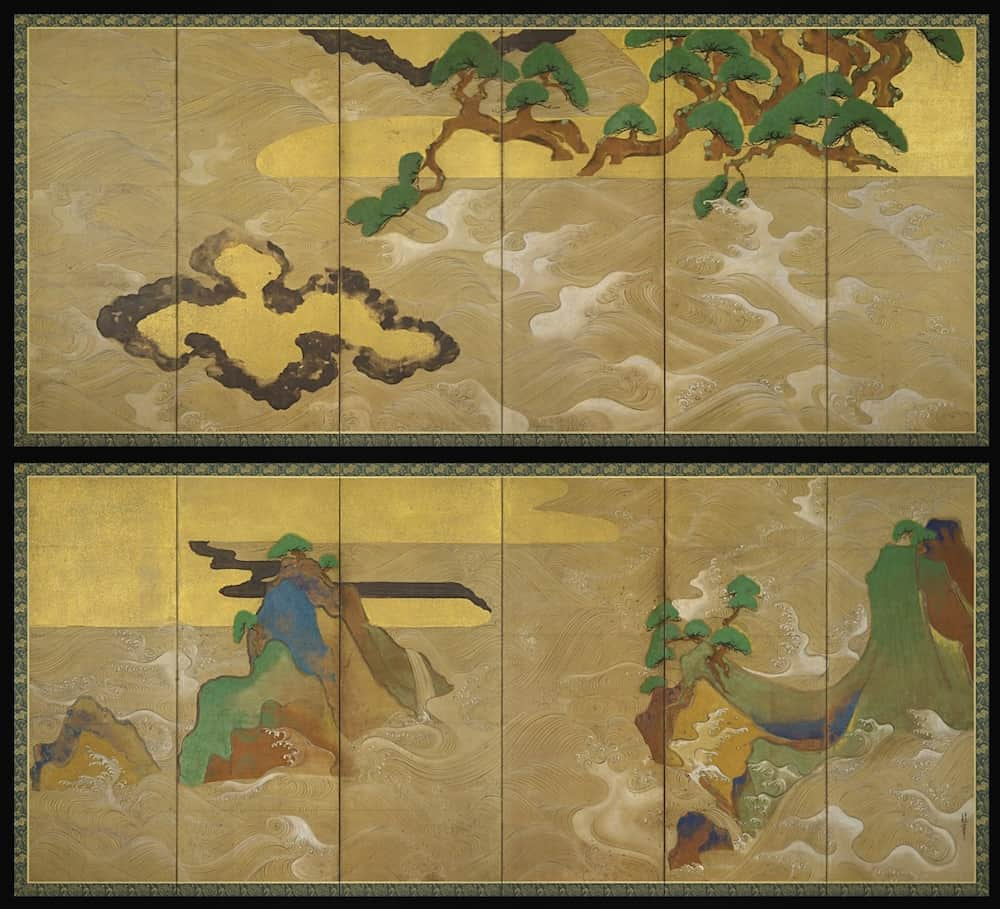
Here, the sea becomes spiritual terrain: luminous, rhythmic, and infinite. These waves are not of destruction but of awakening—reflecting the Rinpa school’s love of asymmetry, natural beauty, and cosmic harmony. Sōtatsu’s innovations inspired successors like Ogata Kōrin and Suzuki Kiitsu, whose curling seas still gleam in Kyoto temples.
Centuries later, Rinpa’s influence rippled westward—informing Japonisme, the European fascination with Japanese aesthetics that shaped artists from Whistler to Klimt.
What is Japonisme?
Japonisme refers to the 19th-century wave of Western fascination with Japanese art, design, and philosophy. It profoundly influenced artists such as Van Gogh, Monet, Whistler, and Debussy—introducing new ideas of asymmetry, flat color, and nature’s rhythm.
3. The Ukiyo-e Masters: Hokusai, Hiroshige, and the Art of Motion
In the Edo period, the wave moved from myth to daily life. Katsushika Hokusai’s The Great Wave off Kanagawa (1831) crystallized Japan’s artistic relationship with the sea. Using imported Prussian blue, gradient bokashi shading, and Western perspective, Hokusai created a ukiyo-e composition where human boats are dwarfed by a clawing wave—yet beyond its curve, Mount Fuji stands calm and eternal.

Hokusai’s wave transcends geography. It is life’s paradox: fear and awe, movement and stillness, destruction and beauty intertwined.
His contemporary Utagawa Hiroshige captured gentler waters—ripples reflecting moonlight or rain along the Tōkaidō road—infusing daily travel with poetic impermanence. Together, they turned water into metaphor: a mirror of human emotion and nature’s indifference.
4. Symbolism: Impermanence, Resilience, and Harmony
Impermanence (無常, mujō)
Waves are fleeting forms. They rise and vanish, teaching that life itself is movement—a truth central to Zen and Buddhist thought.
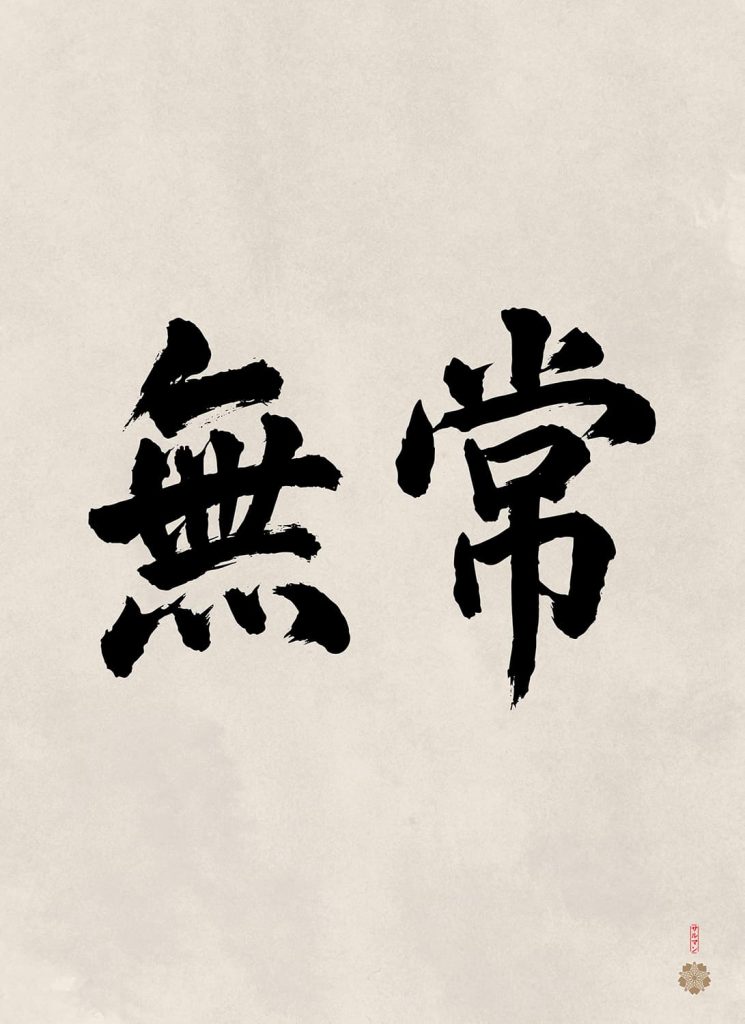
Resilience
Waves crash and return, endlessly renewed. The Japanese see this rhythm as a symbol of strength through adversity—a reminder to bend without breaking.
Harmony of Opposites
Each wave embodies duality: chaos and calm, form and emptiness (mu). This mirrors the balance sought in both Zen practice and Japanese aesthetics—where beauty lives in contrast.
5. Modern Echoes & Global Reach
The fascination with natural rhythm didn’t end with Hokusai and Hiroshige. Later artists such as Matsumoto Hōji, whose Meika Gafu brims with the lively motion of frogs and rippling ponds, and Uehara Kōnen, known for his lyrical Hato-zu (Doves), continued Japan’s centuries-long dialogue with nature’s flow. Their works echo the same sensitivity to movement found in wave art—transforming water, wind, and wing into meditations on life’s impermanence.
From seigaiha patterns on textiles to Hokusai’s influence on architecture and design, the wave motif continues to shape visual culture worldwide.
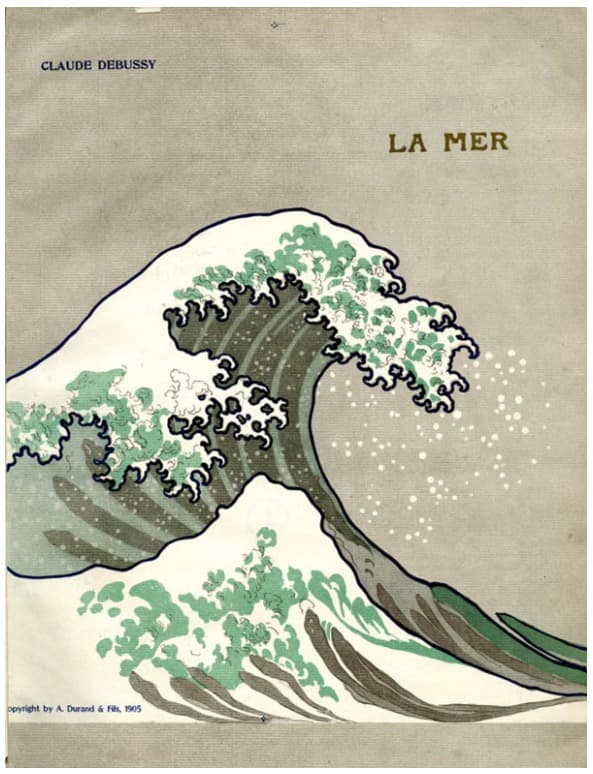
One of the most striking examples of this cross-cultural dialogue is its connection to Claude Debussy’s La Mer. During the height of Japonisme, Debussy kept a reproduction of The Great Wave in his study. Later editions of his orchestral masterpiece featured Hokusai’s wave on the cover—blending sound and sight, Europe and Japan, art and nature. The sea, rendered in music, became the wave’s echo across continents.
Today, the motif reappears everywhere—from contemporary ceramics to minimalist interiors and digital art. Each new interpretation honors the same timeless truth: nothing stays still, and therein lies beauty.
Next time you encounter a wave—on silk, screen, paper, or pixel—notice the story it tells: hope riding on currents, calm after a storm, the pulse of life captured in art.
6. The Art Behind the Waves: Technique and Innovation
Beyond symbolism, Japan’s wave art reveals extraordinary technical mastery:
- Tarashikomi (pooled-ink layering) for texture and translucency.
- Bokashi (gradual shading) in woodblocks to suggest mist and depth.
- Mokume-gane metalwork replicating flowing grain, inspired by water currents.
These techniques mirror the artists’ devotion to shokunin—craftsmanship that merges precision and spirit.
7. Deep Insights: What Waves Teach Us
- Visual Resilience – The repetition of curves offers emotional steadiness.
- Energetic Presence – Every brushstroke holds tension between movement and stillness.
- Social Continuity – From imperial screens to folk prints, waves connect every class and era.
- Spiritual Reflection – Waves become meditations on being—born, fading, returning.
“The wave is never the same twice, yet it is always the wave.”
8. Personal Reflection
As someone who has long been drawn to wave imagery in my own art—especially the Nami no Uta series—I see waves not as symbols of danger but of renewal. Each line, each crest, is an act of letting go. To paint or study a wave is to practice a kind of Zen: watching change take form.
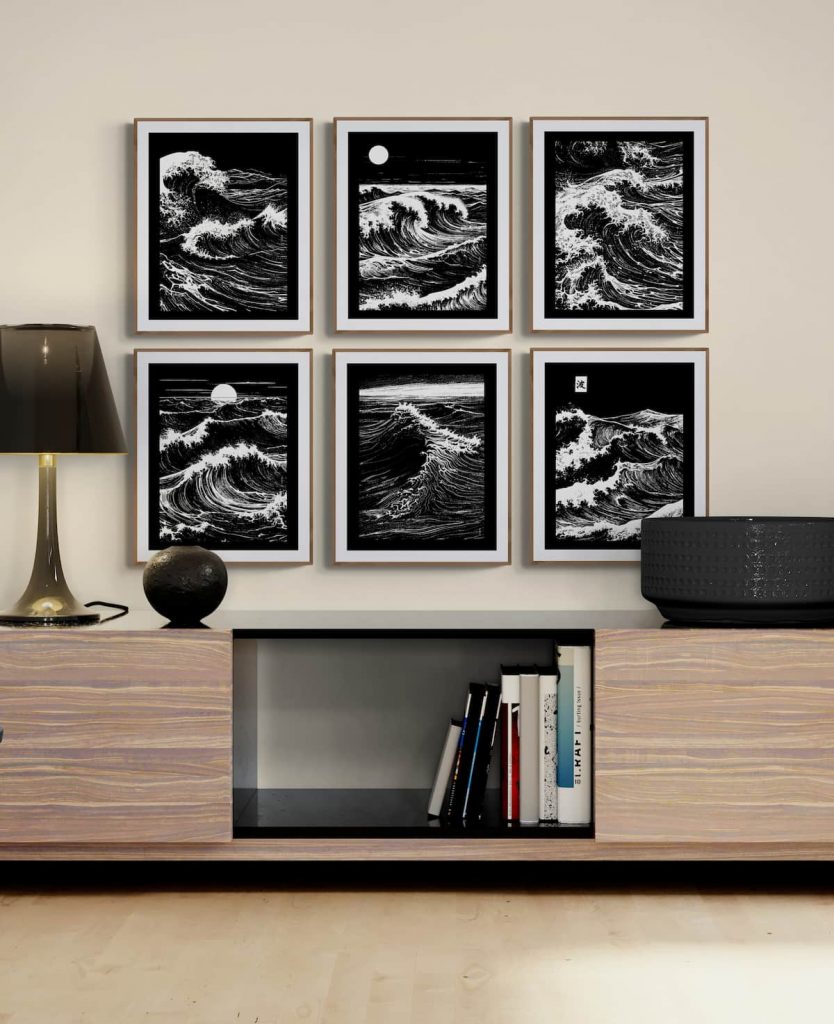
9. FAQ
What does the wave symbolize in Japanese art?
It represents impermanence, resilience, and harmony with nature—the flow of life itself.
Why is Hokusai’s The Great Wave so famous?
Because it unites Japanese tradition with modern perspective, capturing the tension between human fragility and natural grandeur.
What is seigaiha, and where is it used today?
Seigaiha is the stylized wave pattern symbolizing peace and prosperity. It appears on ceramics, fabrics, and contemporary design across the world.
10. Further Reading
- Hokusai: Beyond the Great Wave, British Museum Exhibition Catalogue
- The Rinpa Experience of Nature on the Metropolitan Museum website
- Hokusai and Debussy’s Evocations of the Sea – The Metropolitan Museum of Art
- The Art of Zen related posts:
Read More:
- The Japandi Color Palettes Designers Love, Inspired by Japanese Art
- Tansai Gafu: A Forgotten Design Album of Shōwa Japan
- How Kare Sansui Gardens Reflect Japanese Aesthetics and Zen Philosophy
- Furuya Kōrin and Shin Bijutsukai: A New Ocean of Japanese Design
- New Japanese Art Prints: Mt. Fuji and the Grace of the Geisha

At The Art of Zen we carry our own hand-crafted original Japanese art prints in the ukiyo-e and Japandi style. Some of our best selling work is Mount Fuji wall art and Japandi wall art.
Add some zen to your space with brilliant original art from the Art of Zen shop.
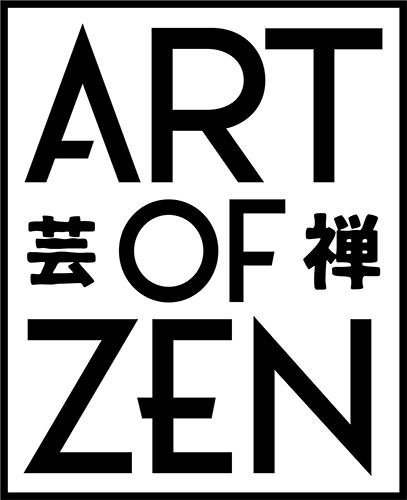
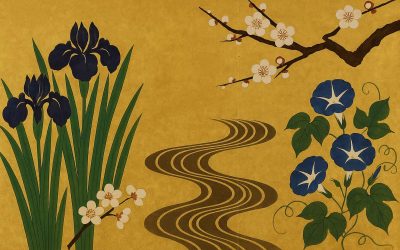

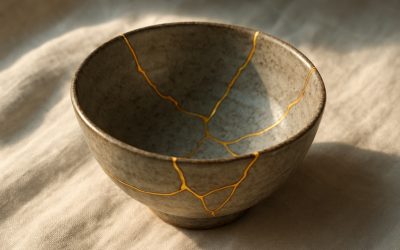
0 Comments